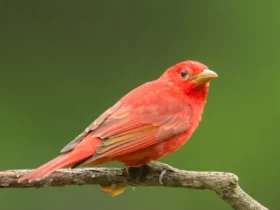The Hyacinth Macaw, scientifically known as Anodorhynchus hyacinthinus, is one of the most beautiful and colorful bird species in the world. Native to the Amazon rainforest, it is an extraordinary and captivating bird. Renowned for its stunning appearance, intelligent nature, and remarkable size, the Hyacinth Macaw is highly sought after and cherished as one of the most desirable parrot species globally.
Hyacinth Macaw images
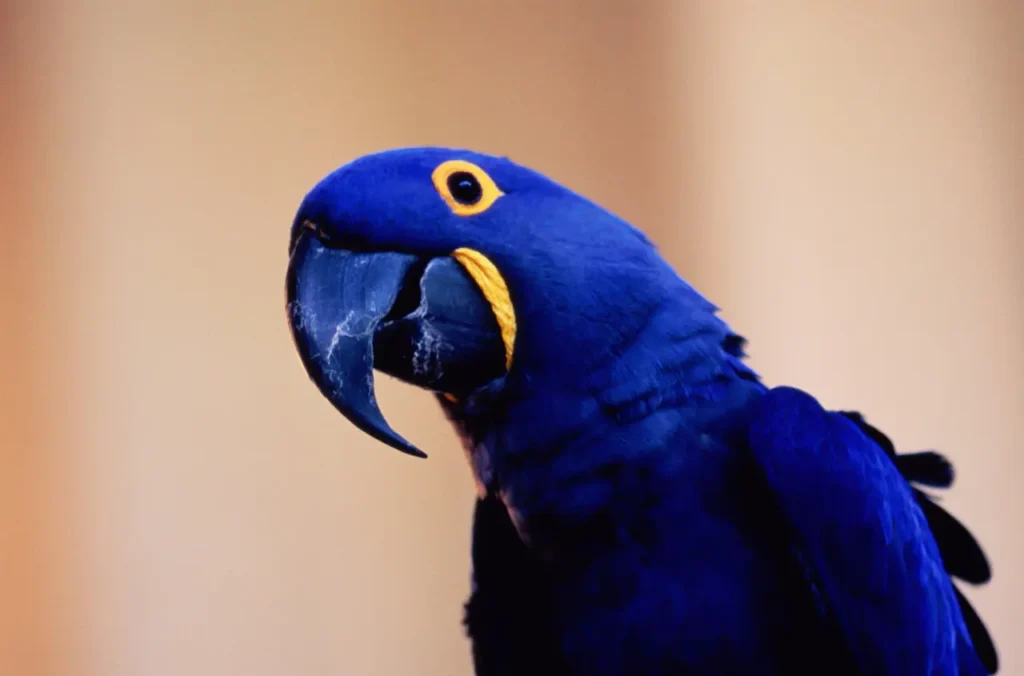
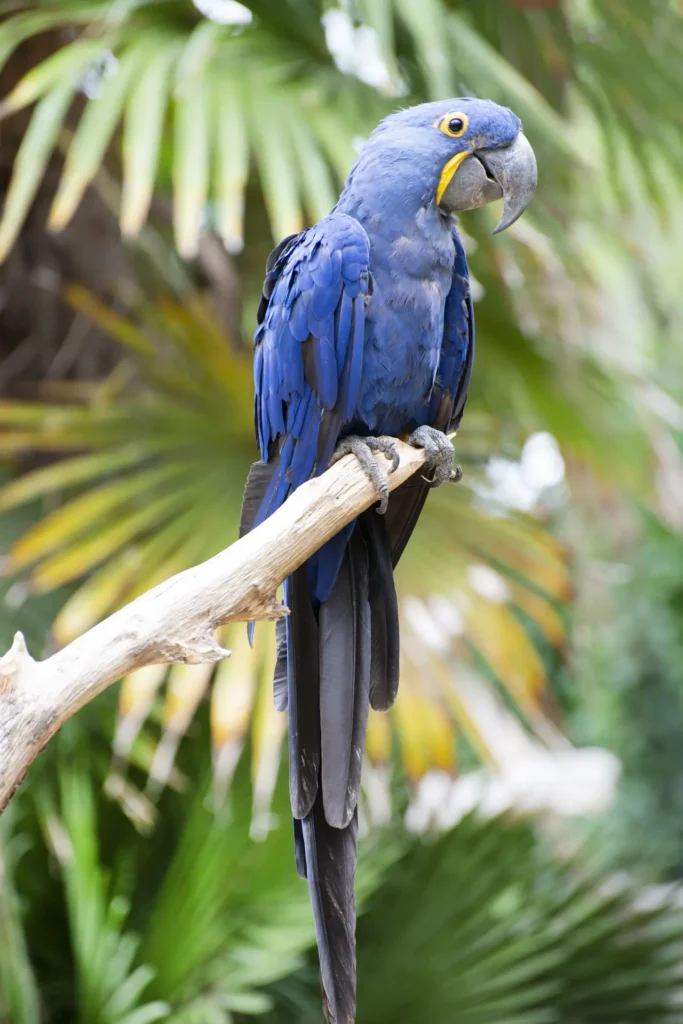
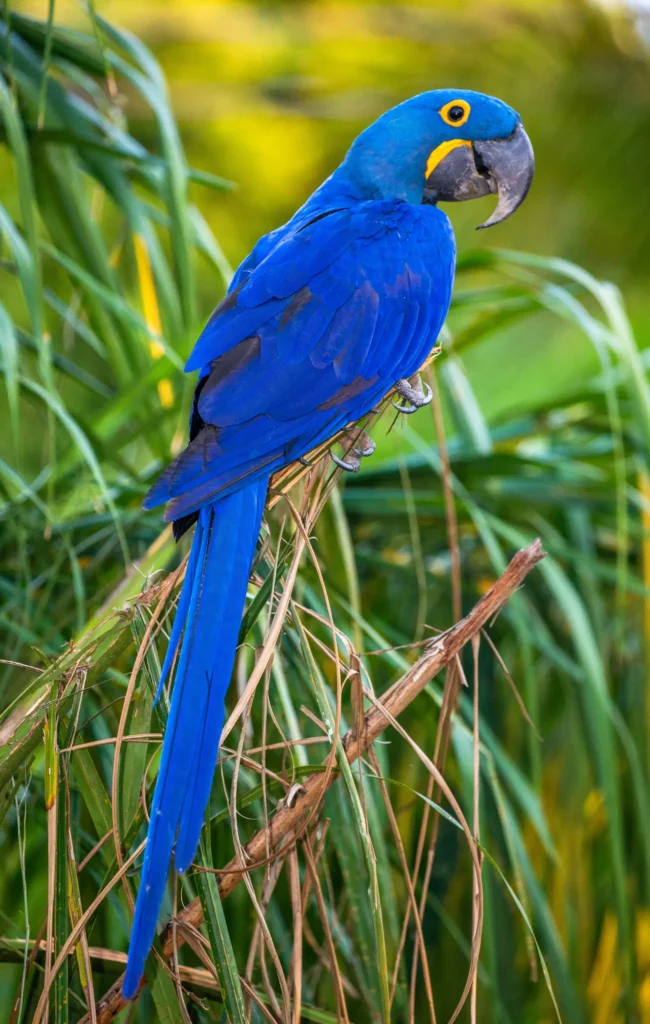
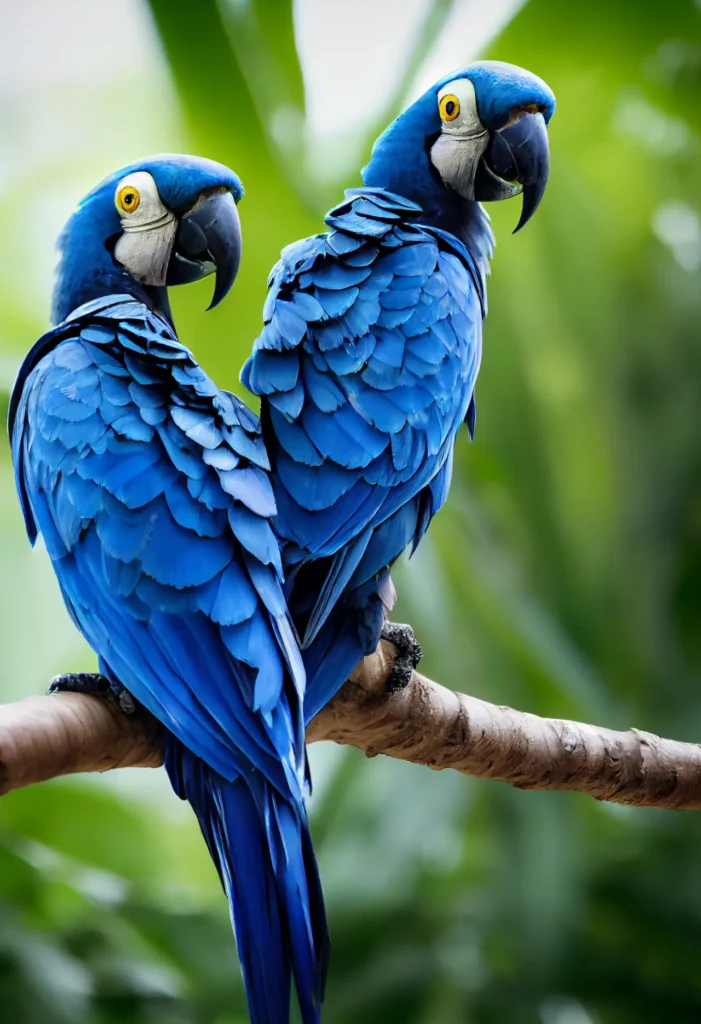
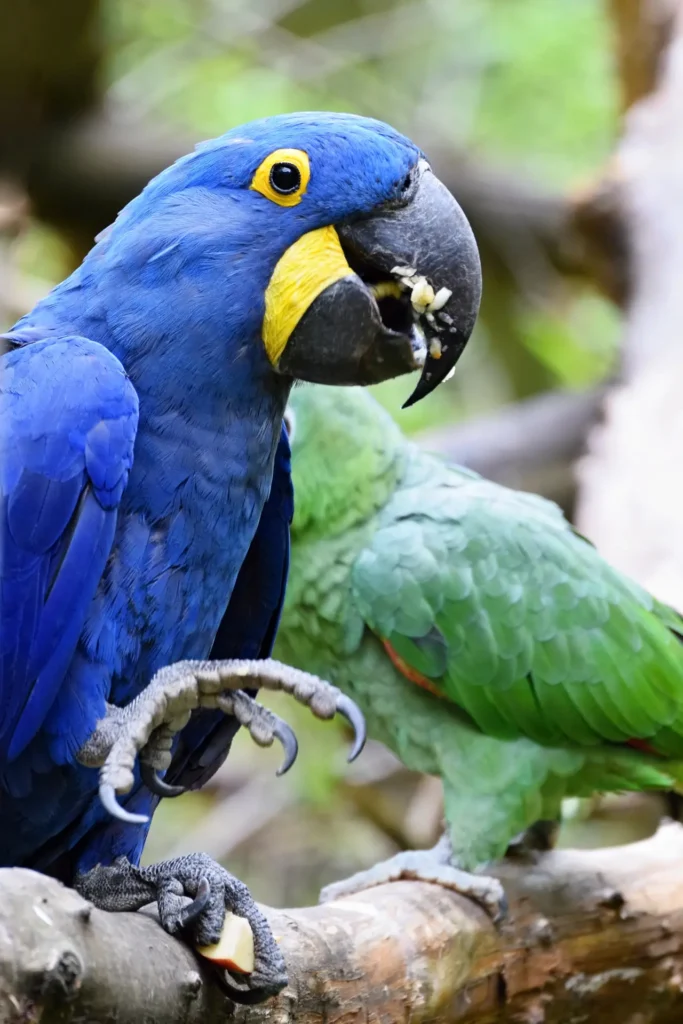
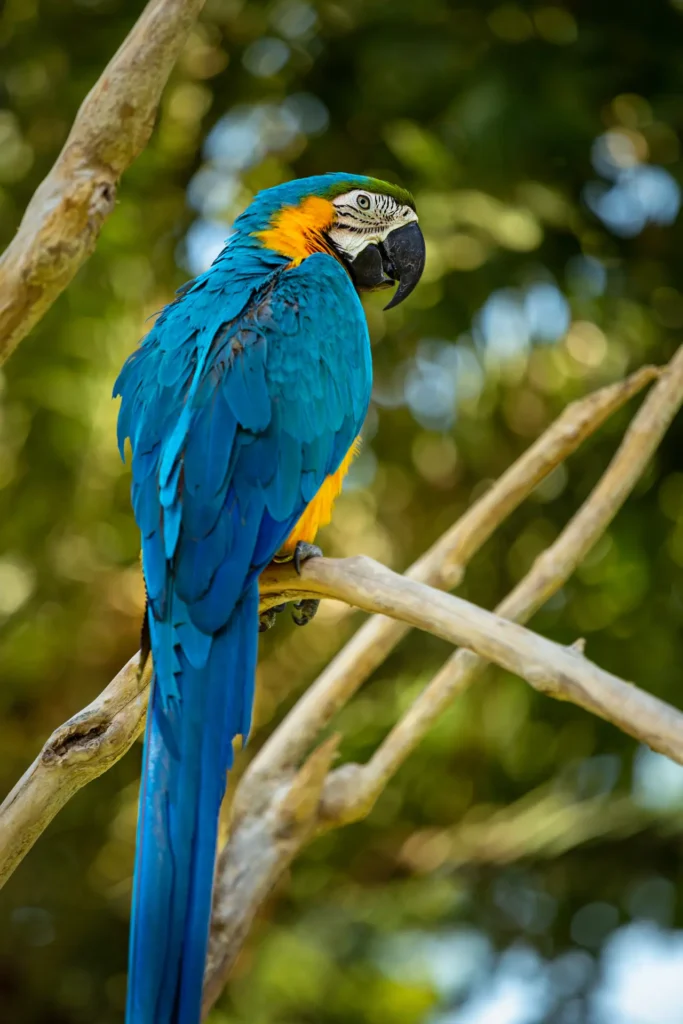
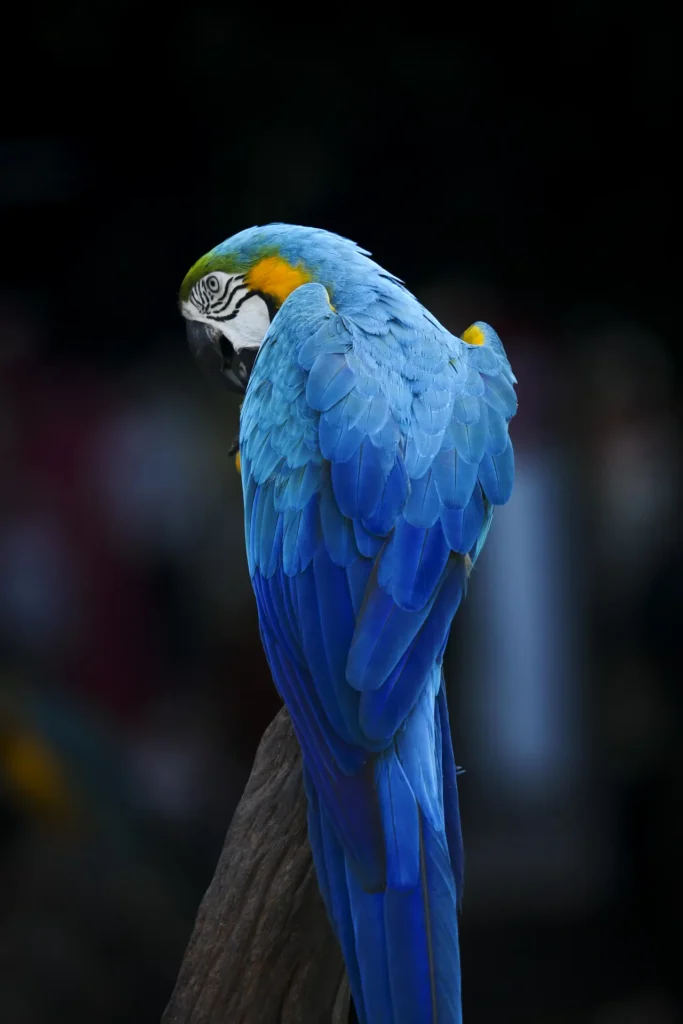
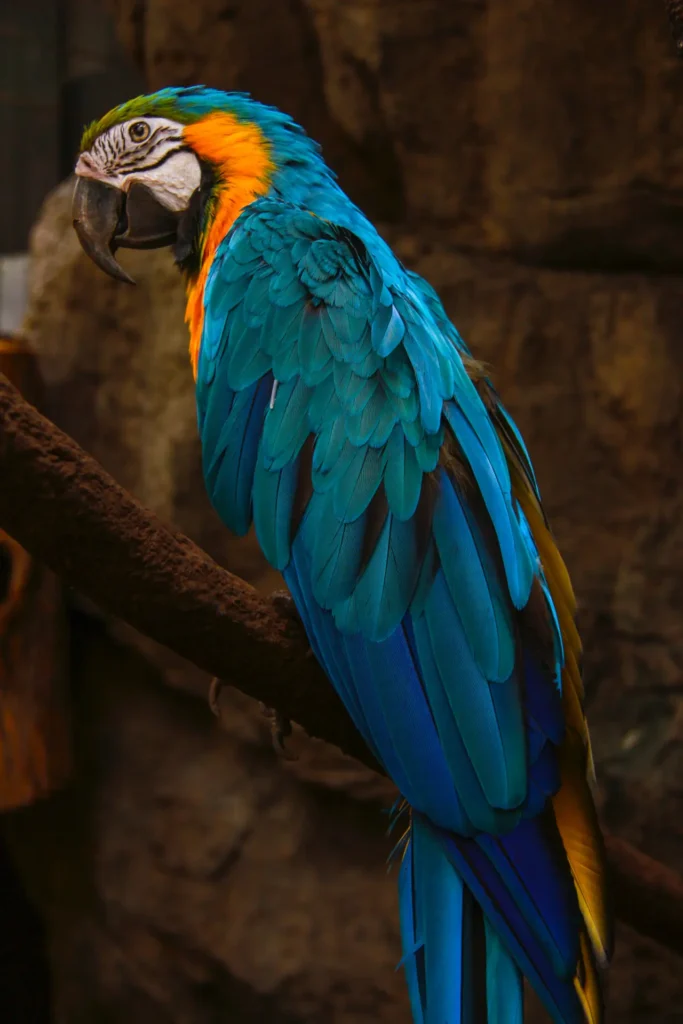
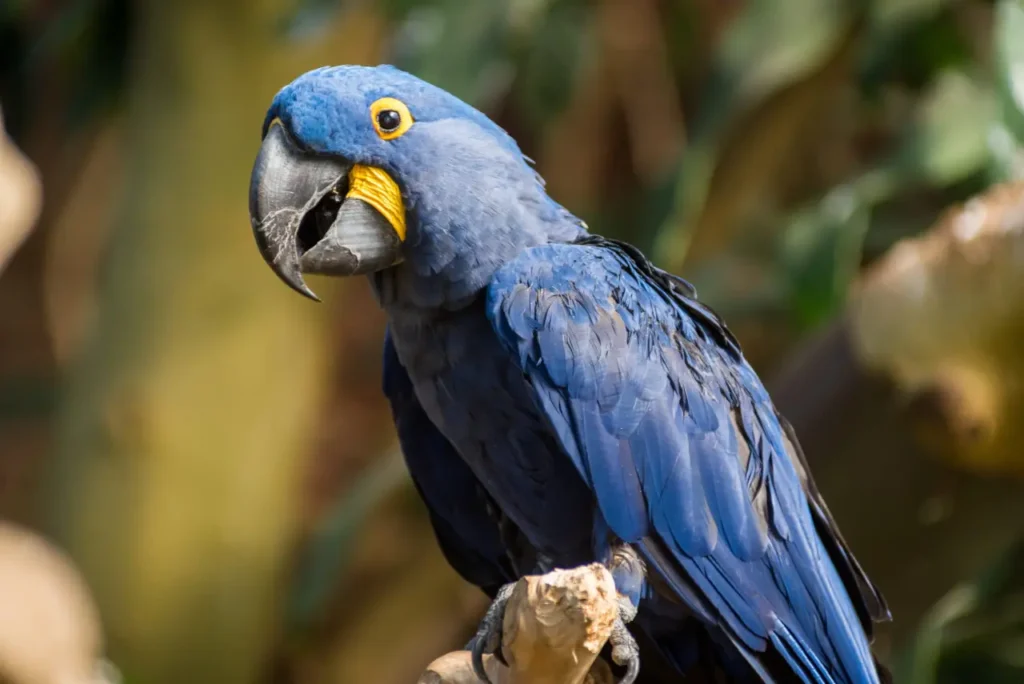
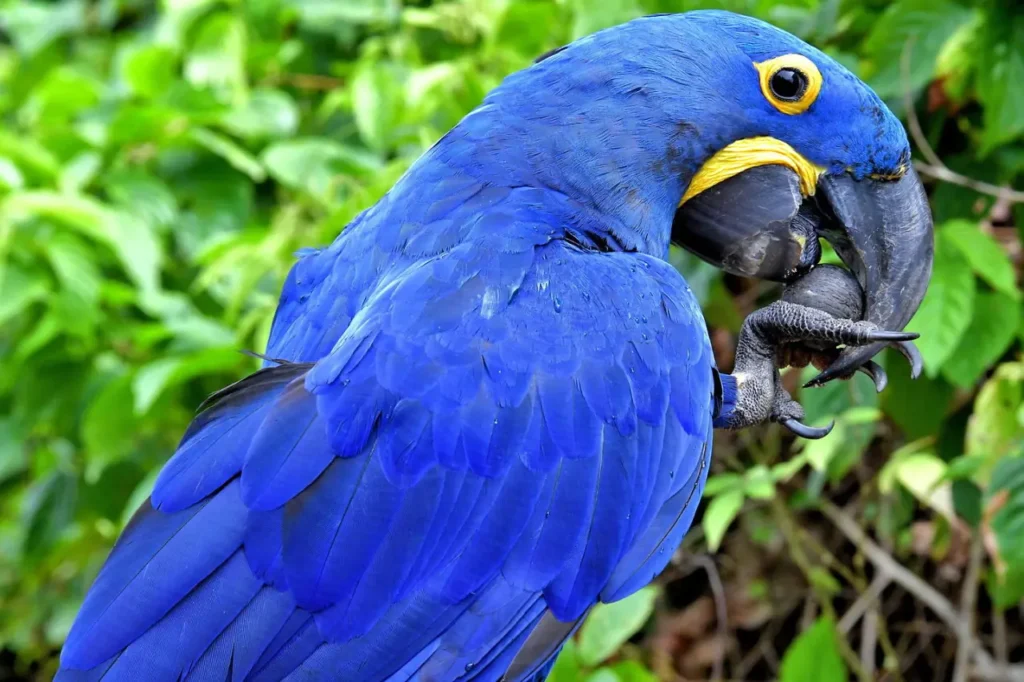
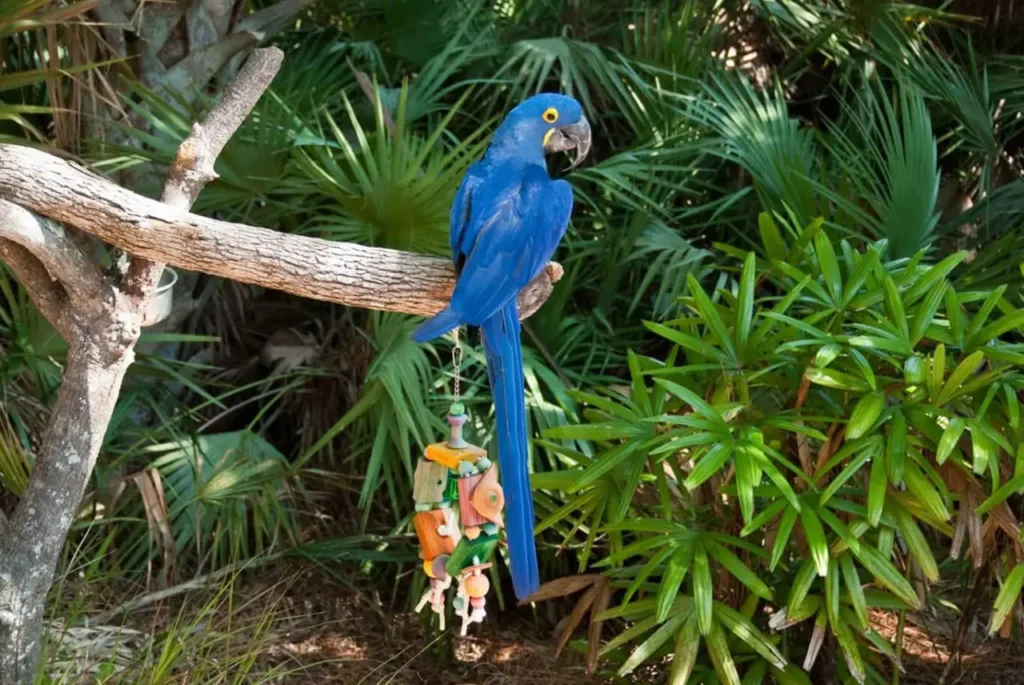
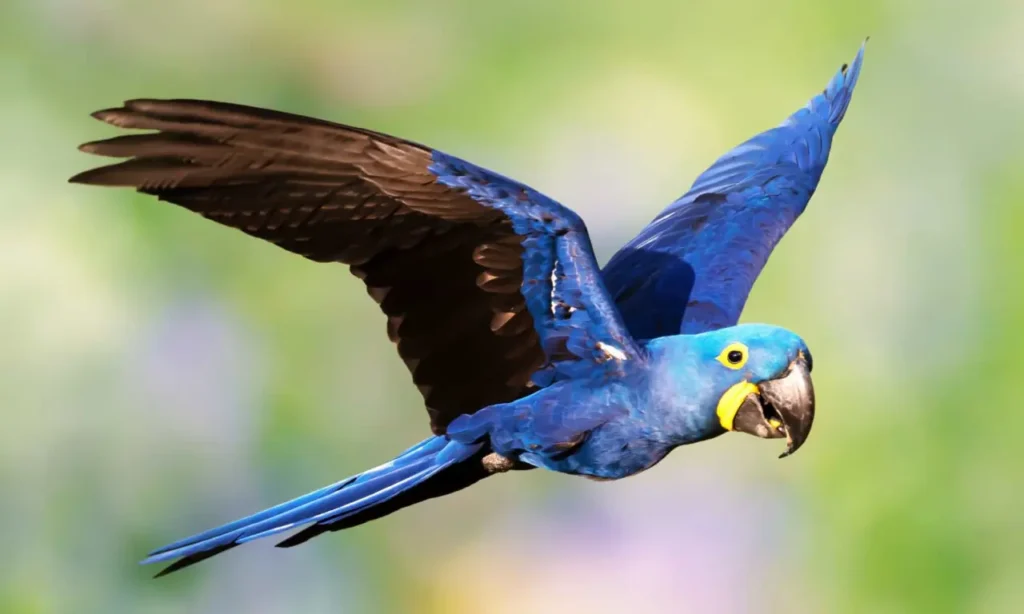
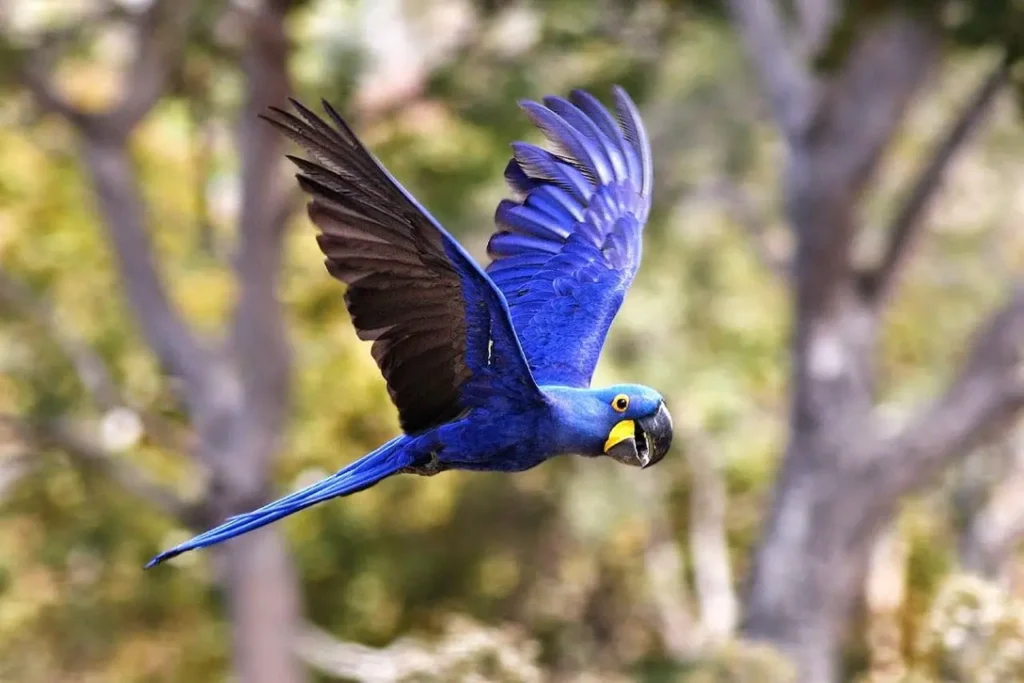
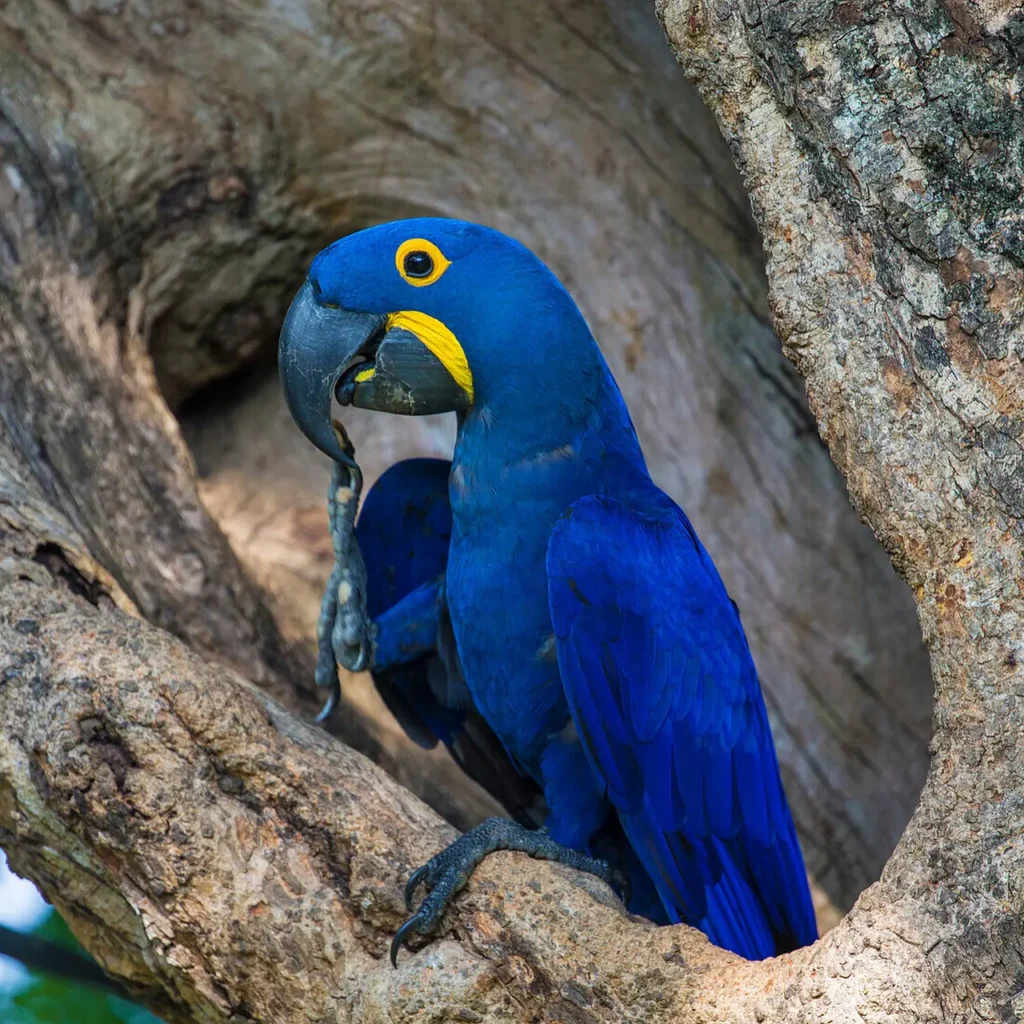
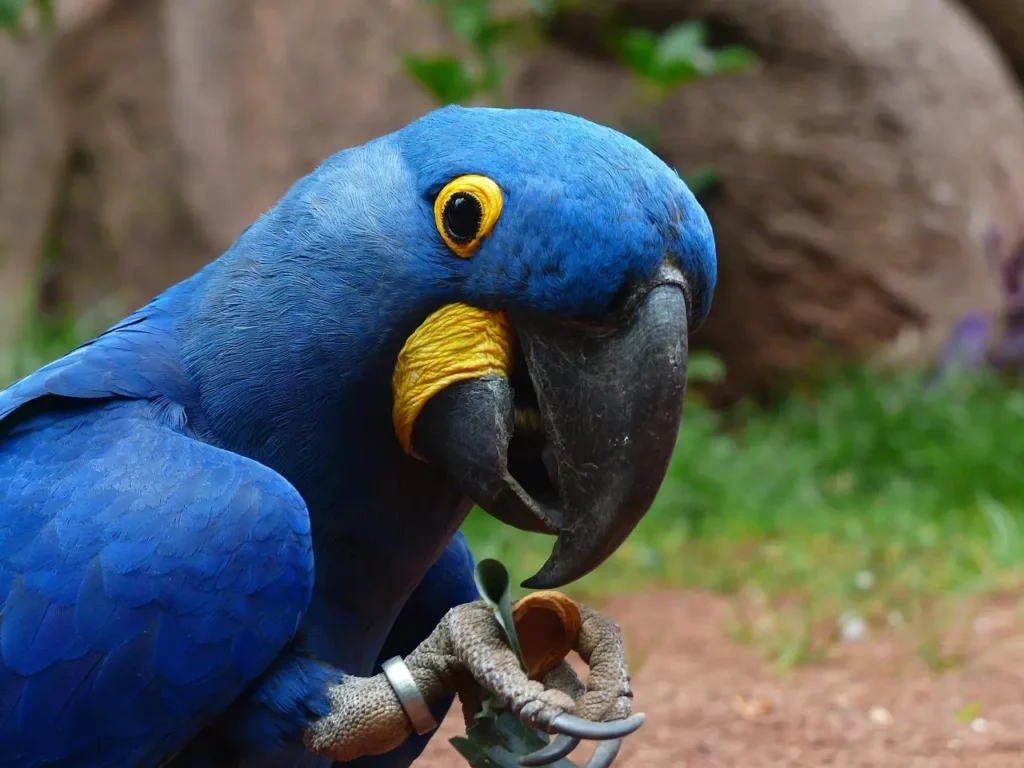
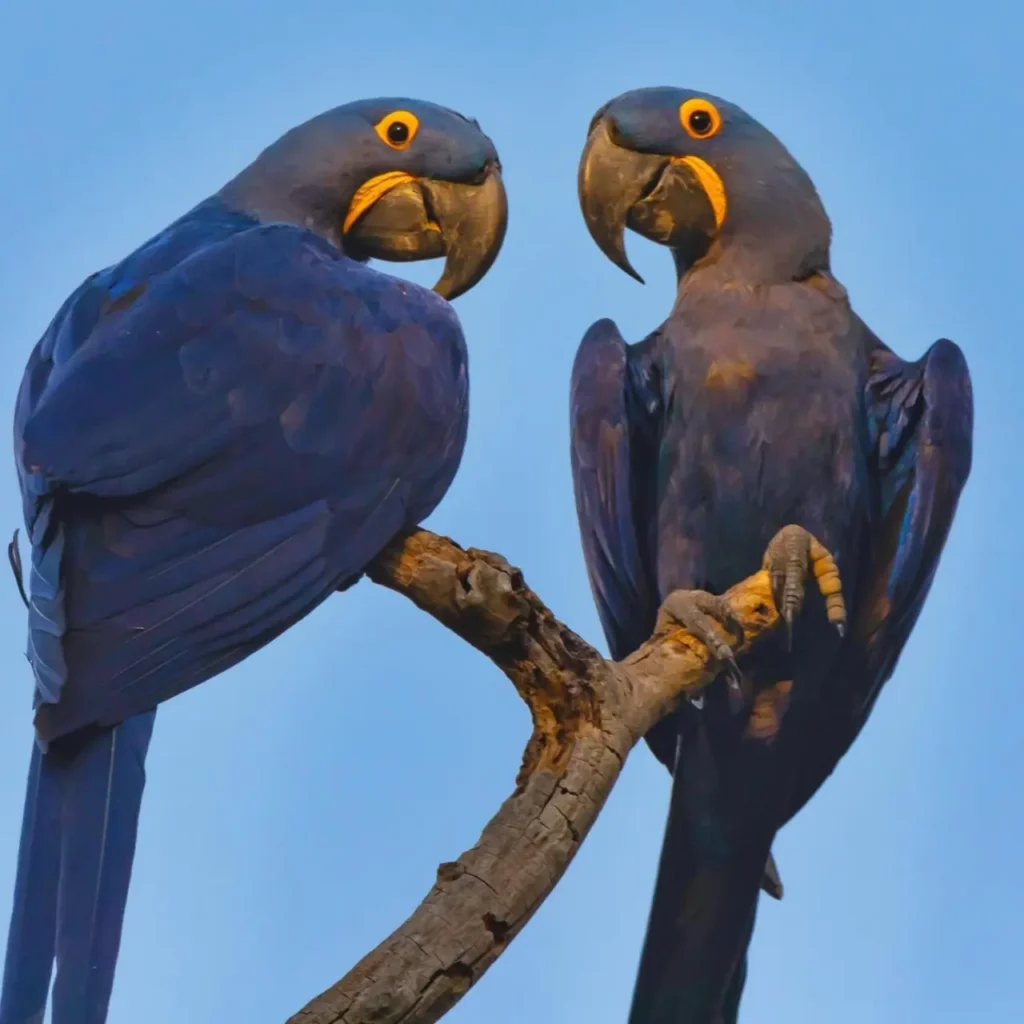
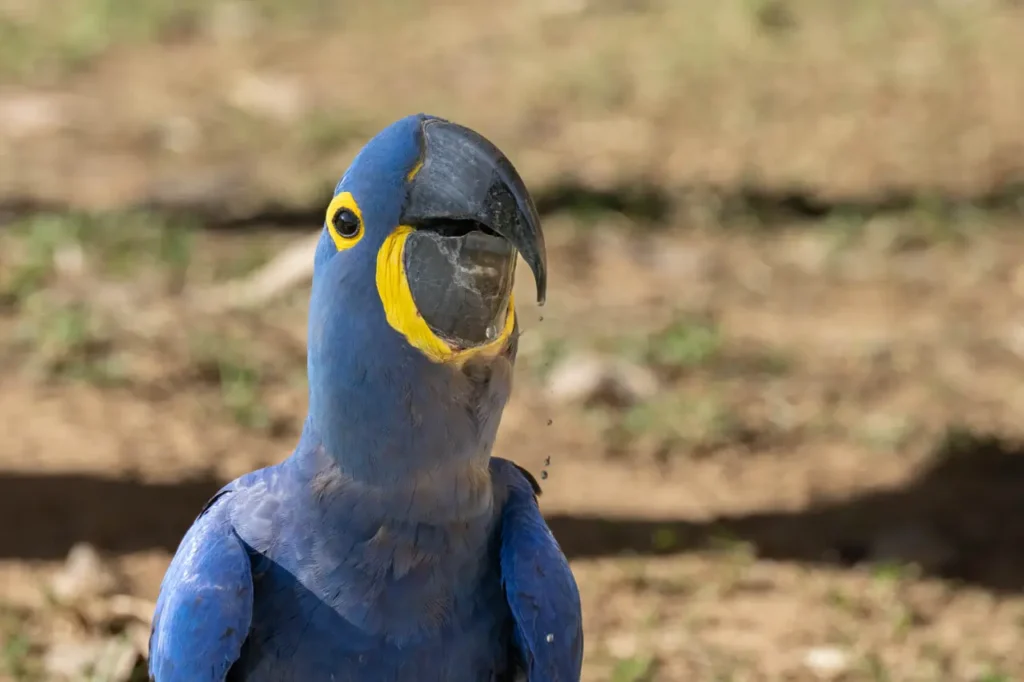
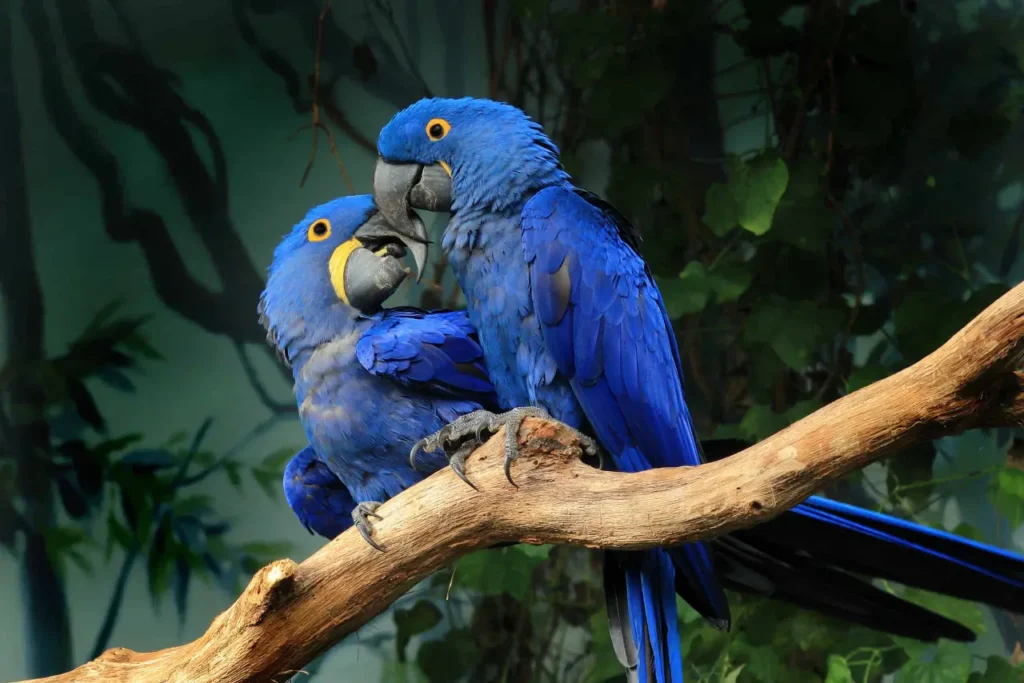

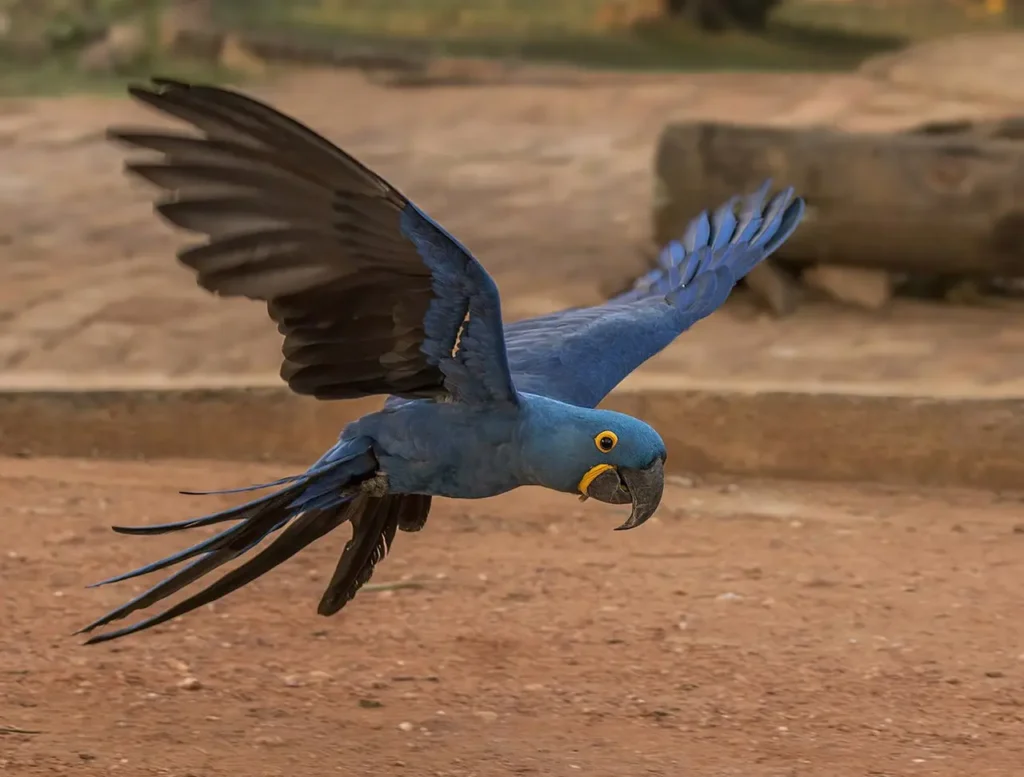
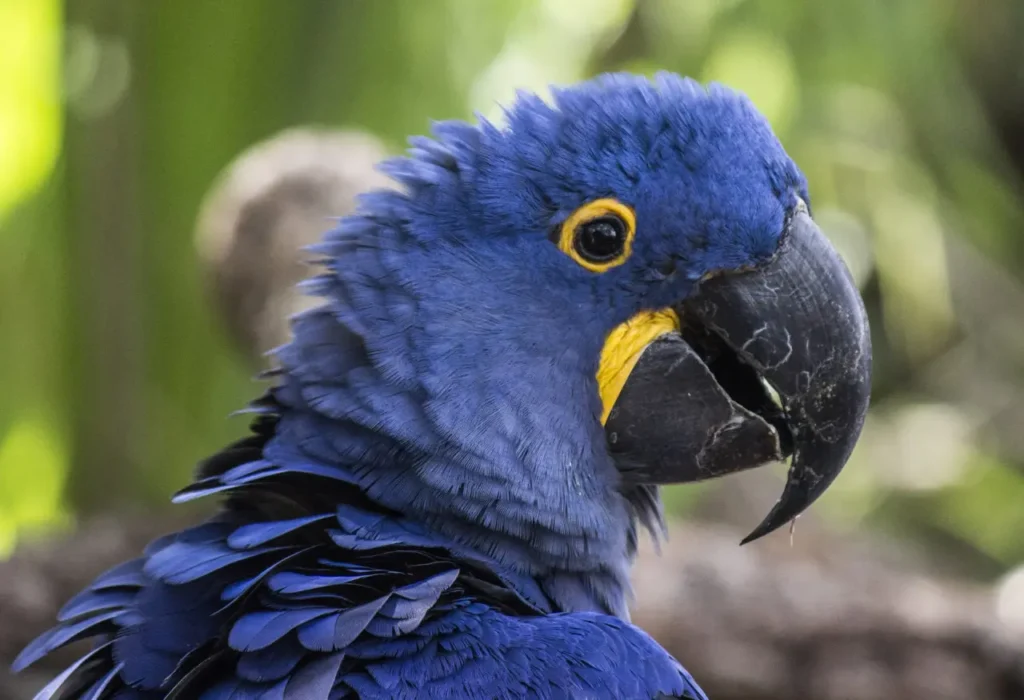
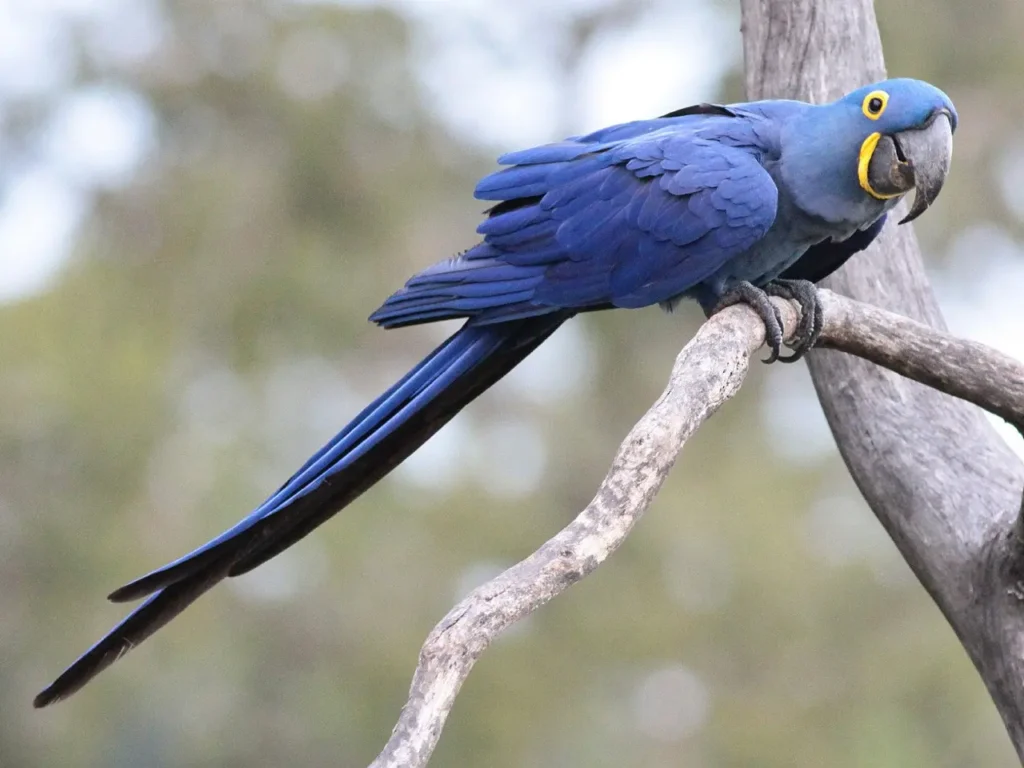
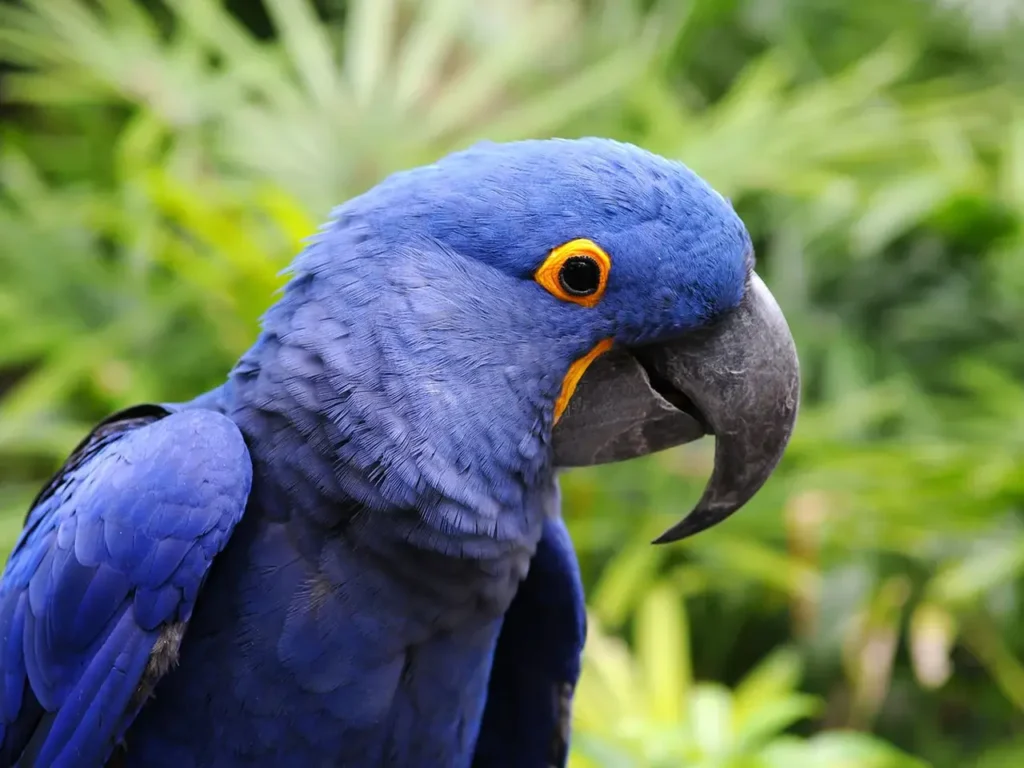
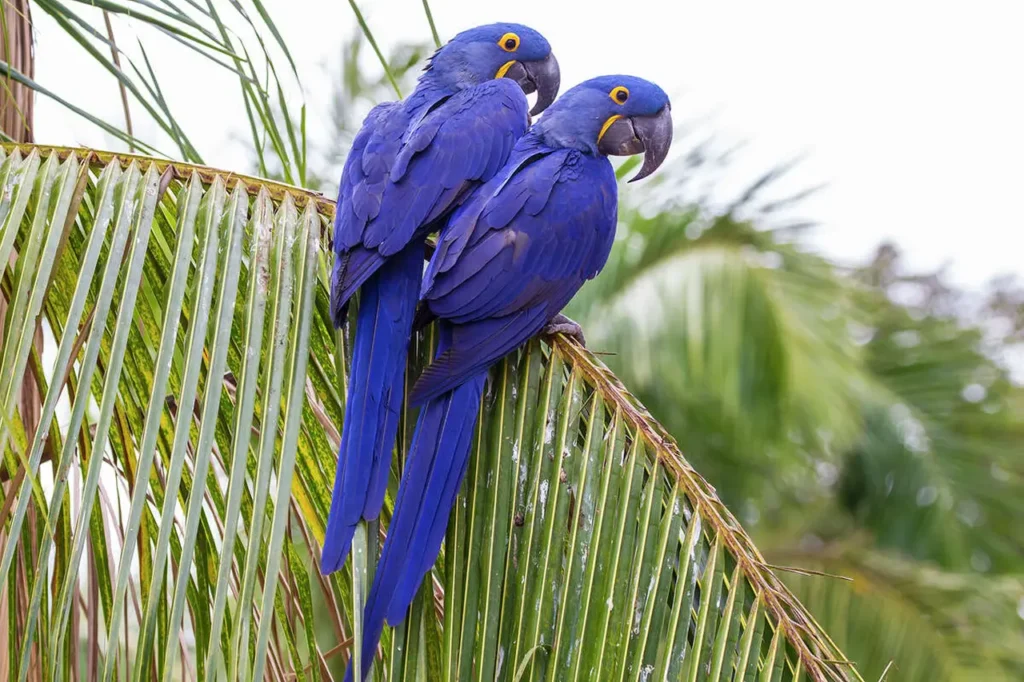


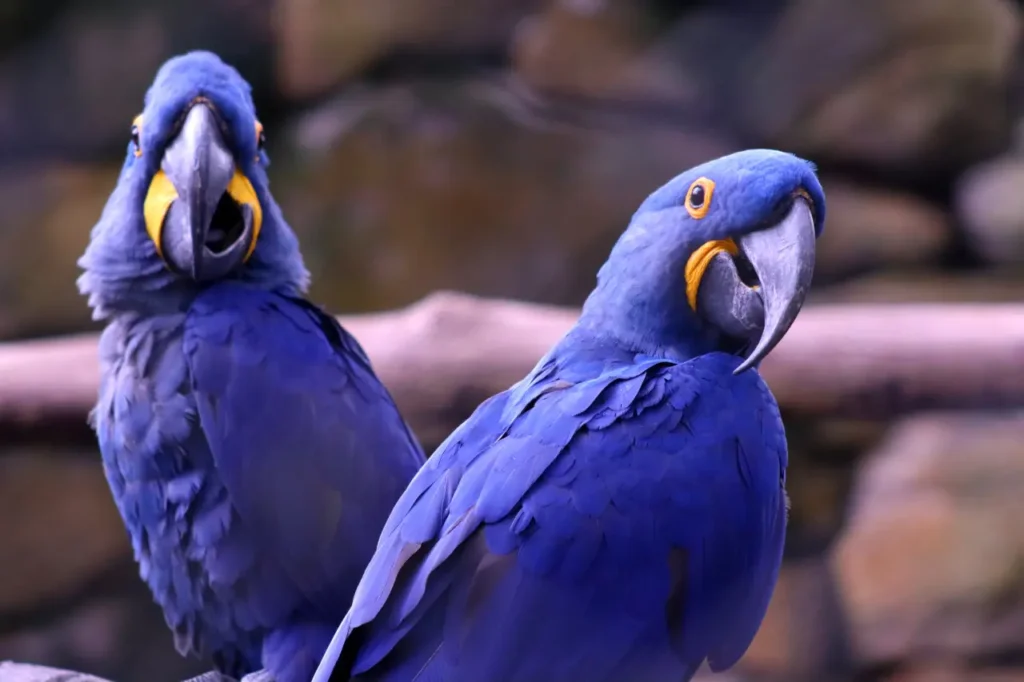
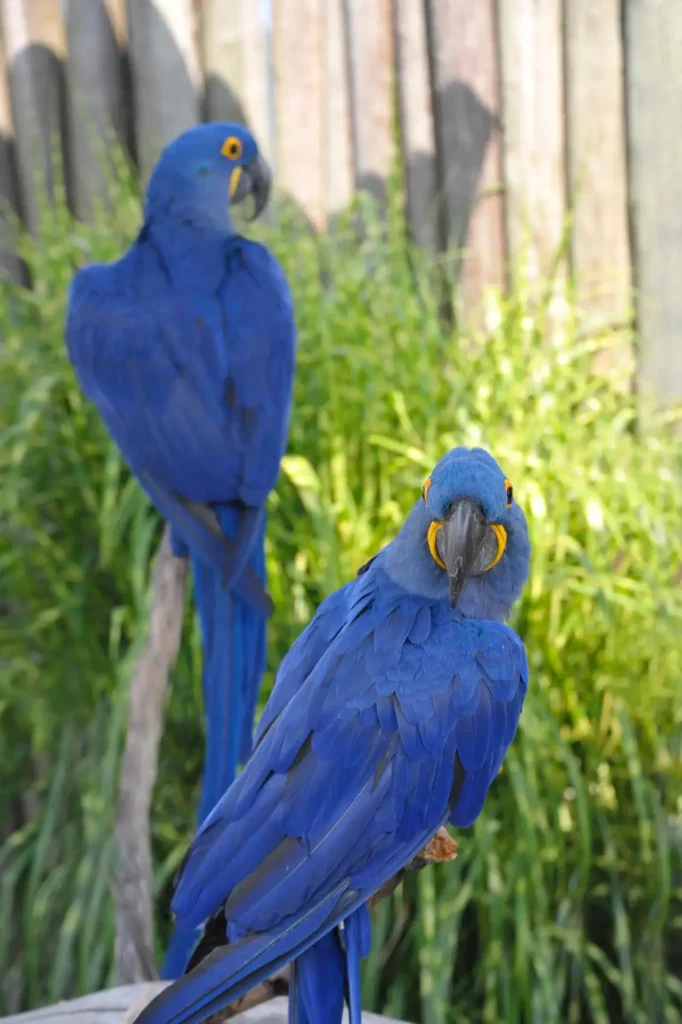
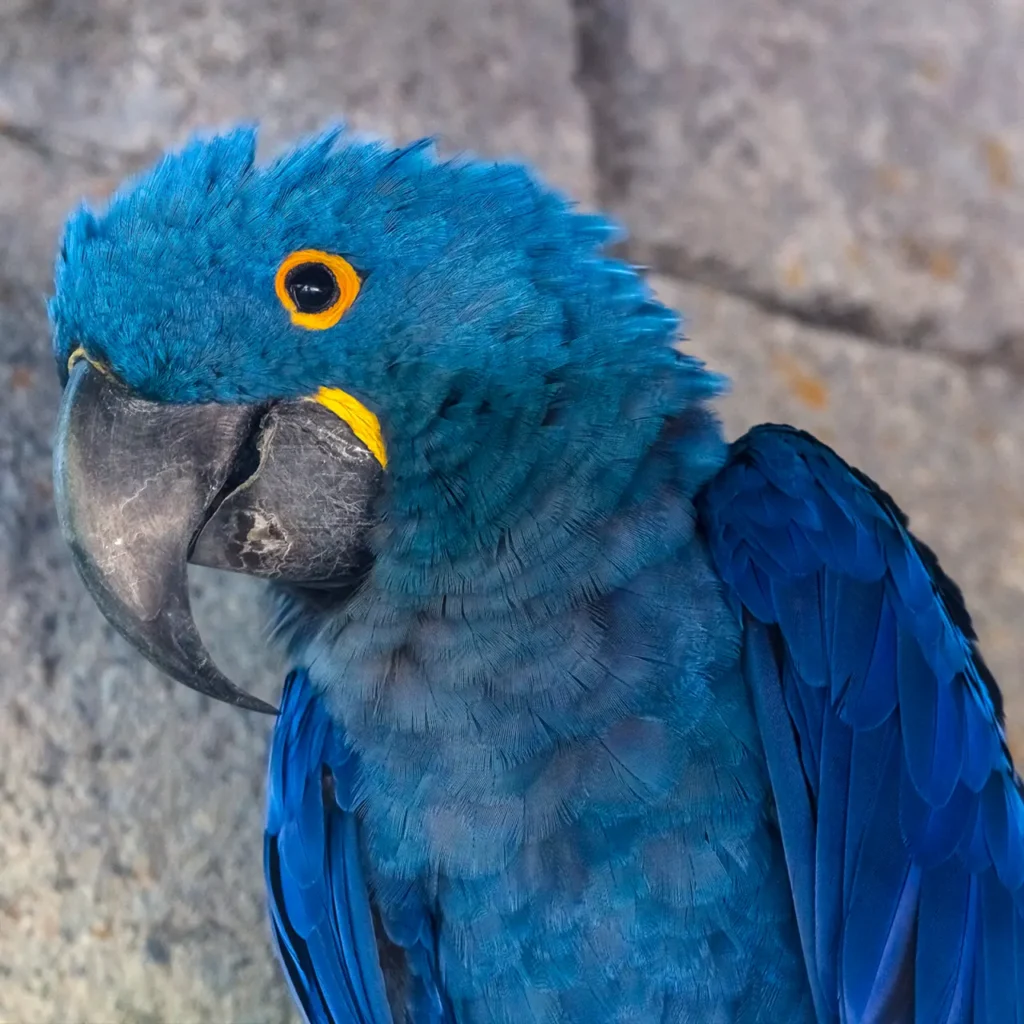
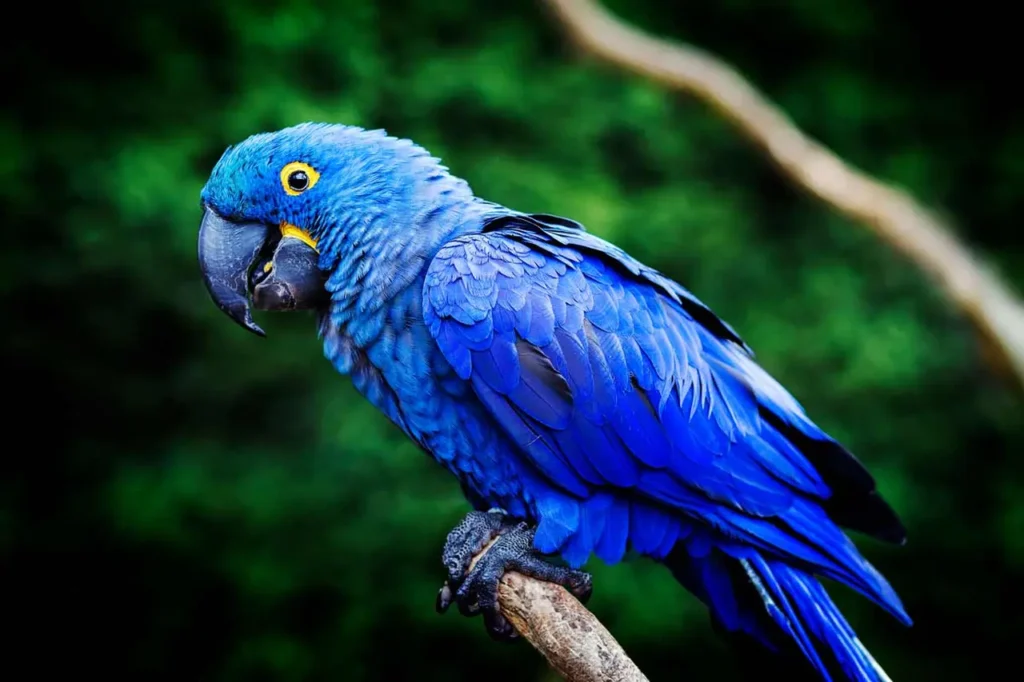
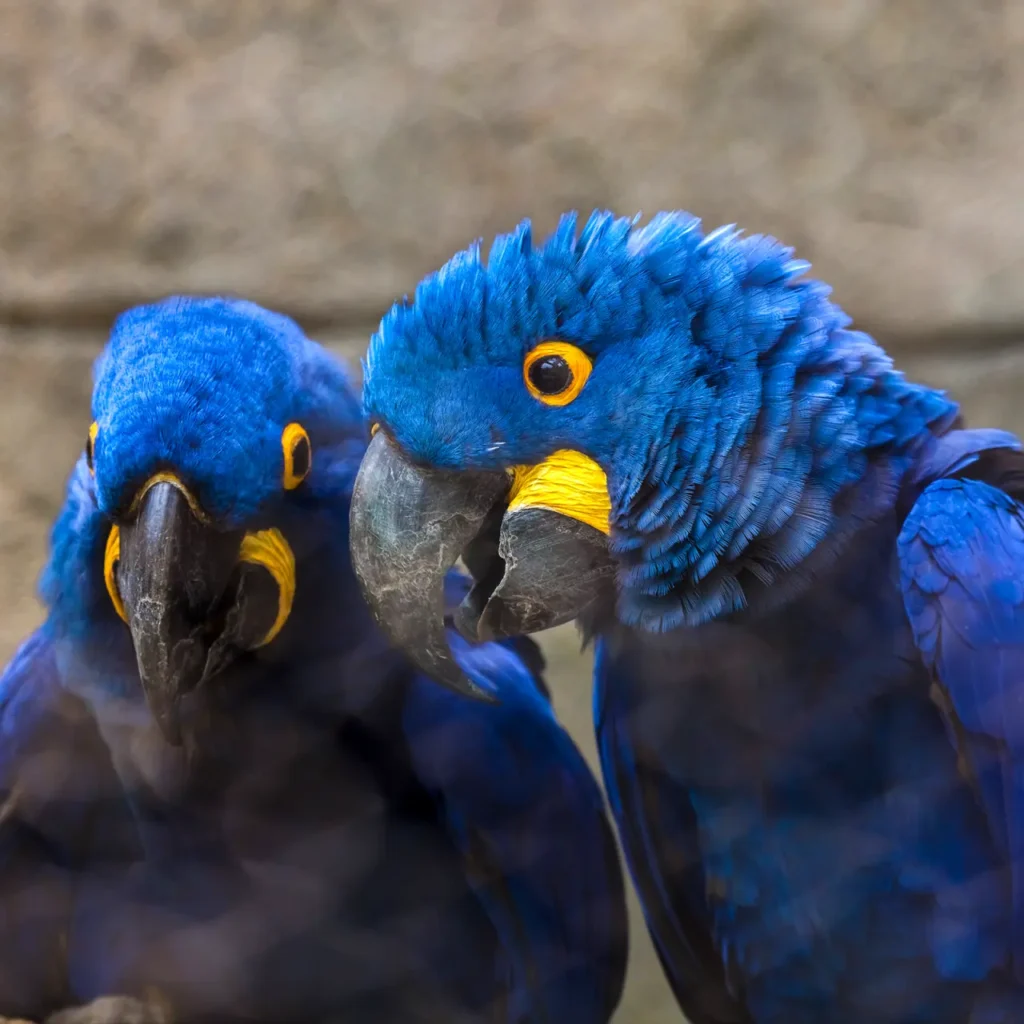
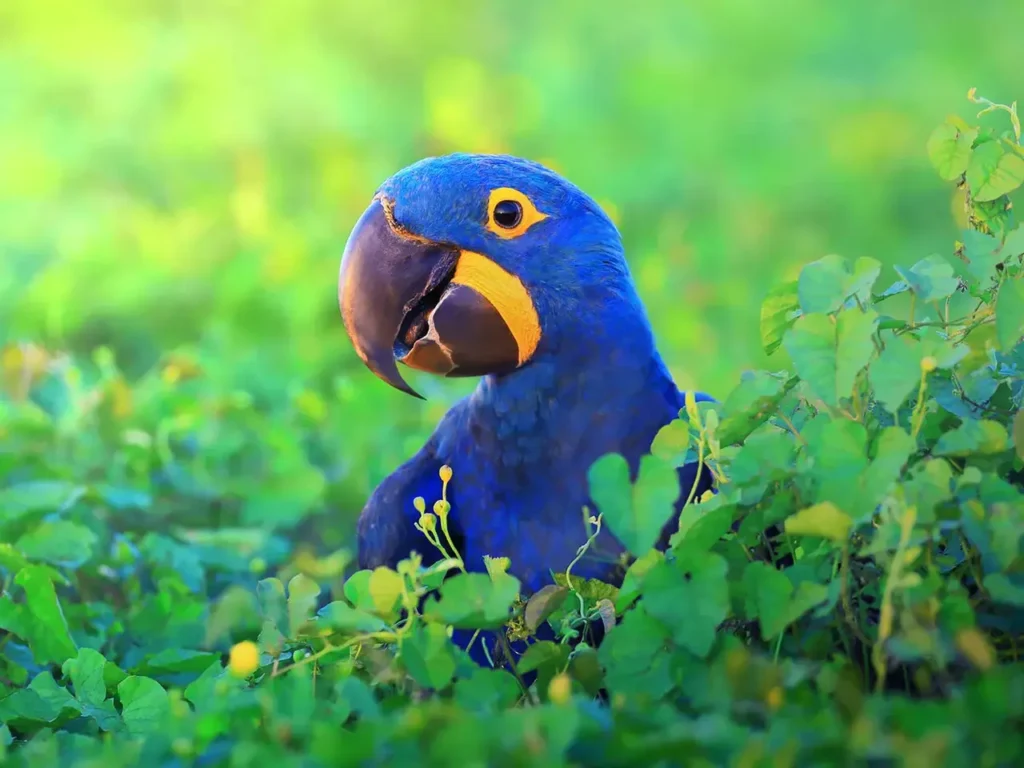
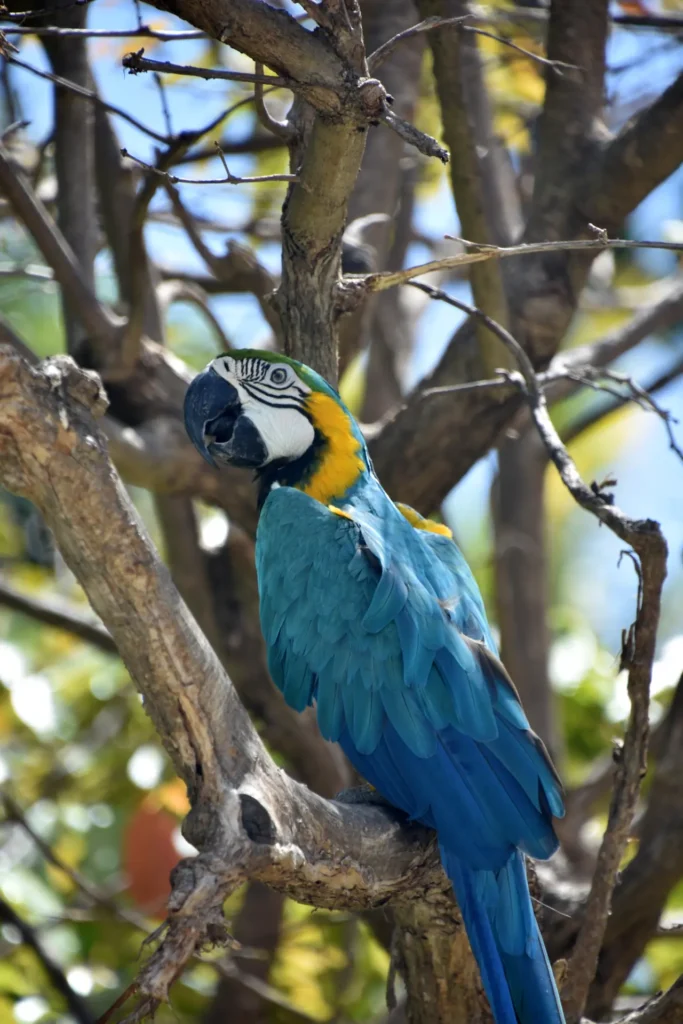
Let us delve into the fascinating world of this magnificent creature and explore the qualities that make it truly remarkable.
Appearance
The Hyacinth Macaw is instantly recognizable for its vibrant cobalt-blue plumage, which covers its entire body, wings, and tail. Its feathers create a stunning contrast against its bare, bright yellow facial skin and striking black beak. With a wingspan of up to 4 feet (120 cm) and a length of approximately 3.3 feet (100 cm), it is the largest species of flying parrot in the world. These majestic birds are truly a sight to behold.
Habitat and Distribution
Hyacinth Macaws are native to the central regions of South America, primarily found in the Amazon Basin and adjacent areas of Brazil, Bolivia, and Paraguay. They inhabit the open savannas, palm swamps, and tropical rainforests of these regions, where they rely on specific tree species for nesting and feeding. The macaws form monogamous pairs and are known for their strong bond, often staying together for life.
Diet and Feeding
The diet of Hyacinth Macaws mainly consists of various nuts, seeds, and fruits found in their natural habitat. They have a specialized beak that enables them to crack open the tough shells of palm nuts with ease. Their strong jaw muscles and sharp beak make light work of extracting the nutritious kernels hidden inside. Additionally, they feed on other fruits, berries, and even the mineral-rich clay found along riverbanks, which aids in their digestion.
Social Behavior and Intelligence
These magnificent birds are highly social and often seen in small groups or pairs. They possess exceptional intelligence and have demonstrated problem-solving abilities in various studies. Hyacinth Macaws communicate through a range of vocalizations, including loud squawks, screeches, and soft murmurs. Their calls serve as a means of bonding, defending their territory, and communicating with their mate or flock members.
Appreciating the Hyacinth Macaw
The Hyacinth Macaw’s majestic beauty and intriguing behavior have captivated bird enthusiasts and nature lovers worldwide. Their unique characteristics make them a popular subject for ecotourism, attracting visitors who wish to witness these magnificent creatures in their natural habitat. It is essential to raise awareness about the conservation needs of the Hyacinth Macaw and support initiatives that protect their environment and combat illegal wildlife trade.
Unfortunately, the Hyacinth Macaw is currently listed as “vulnerable” on the International Union for Conservation of Nature (IUCN) Red List of Threatened Species. The primary threats to their population include habitat loss due to deforestation, illegal pet trade, and poaching. Conservation efforts, such as the establishment of protected areas and breeding programs, are crucial for their long-term survival.
In conclusion, the Hyacinth Macaw stands as a true icon of the Amazon rainforest, representing the beauty and diversity of this precious ecosystem. With its striking appearance, intelligence, and remarkable size, this parrot species continues to inspire awe and admiration. Let us cherish and protect these magnificent birds to ensure their survival for future generations to appreciate and admire.
